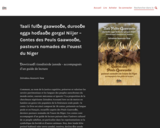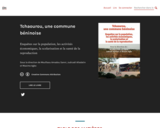
Short Description:
As an applied research practice, policy evaluation has borrowed a range of methods from the social sciences. But its growth has also led to the development of specific approaches. Based on this observation, two fundamental choices guide this book: combining tools from fundamental research with others developed in evaluation practice, and opening a dialogue between quantitative and qualitative methods. Twenty-four qualitative, quantitative or mixed methods or approaches are thus presented in a didactic and illustrated manner, based on a common series of questions that facilitate their comparison.Thanks to its accessibility, this book is both a tool for interdisciplinary and inter-methods dialogue for academics, and a useful introduction for students, practitioners, policymakers and civil society.
Long Description:
As an applied research practice, policy evaluation has borrowed a range of methods from the social sciences. But its growth has also led to the development of specific approaches.
Based on this observation, two fundamental choices guide this book: combining tools from fundamental research with others developed in evaluation practice, and opening a dialogue between quantitative and qualitative methods.
Twenty-four qualitative, quantitative or mixed methods or approaches are thus presented in a didactic and illustrated manner, based on a common series of questions that facilitate their comparison.
Thanks to its accessibility, this book is both a tool for interdisciplinary and inter-methods dialogue for academics, and a useful introduction for students, practitioners, policymakers and civil society.
Word Count: 75135
(Note: This resource's metadata has been created automatically as part of a bulk import process by reformatting and/or combining the information that the author initially provided. As a result, there may be errors in formatting.)
- Subject:
- Political Science
- Social Science
- Provider:
- Éditions science et bien commun
- Date Added:
- 02/02/2024


